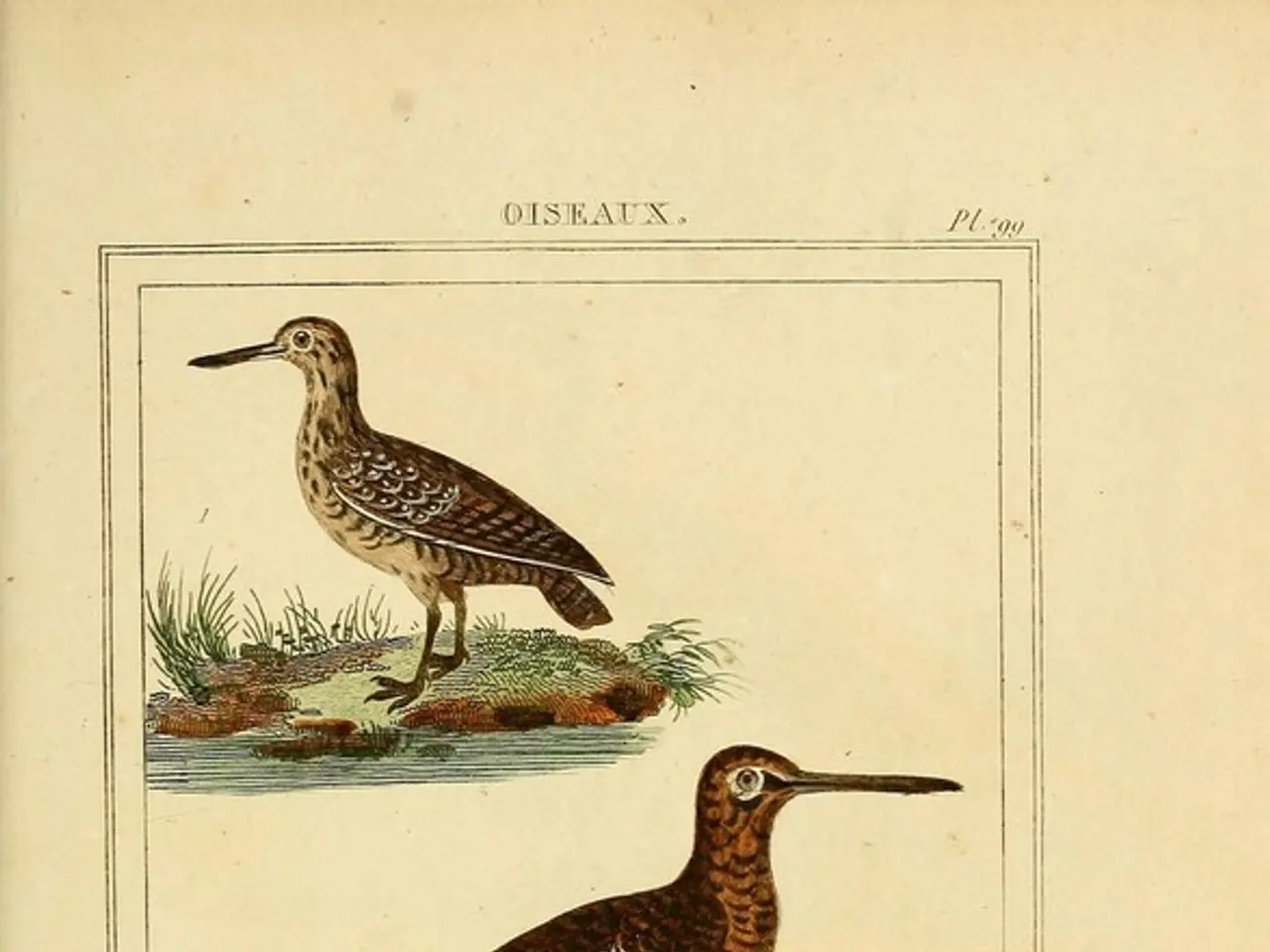Practical advice on providing meals for birds from your backyard
In the heart of nature, a well-stocked bird feeding station can attract a vibrant array of avian visitors. Here's how to create an inviting and pest-free environment for wild birds in your garden.
Firstly, the choice of food is crucial. Black oil sunflower seeds, white proso millet, red milo, safflower, peanuts, sunflower hearts, suet pellets, and mealworms (live or dried) are all excellent options. These high-energy, nutrient-rich foods attract a variety of bird species, including cardinals, finches, sparrows, chickadees, robins, and nuthatches [1][2][3][4][5].
However, it's essential to consider the potential risks. Raisins, for instance, are a favourite among robins and thrushes but can be toxic to dogs and cats. Soaking raisins overnight in water makes them soft and adds additional moisture, beneficial during the breeding season [6]. Similarly, fruits from the garden, such as apples, pears, and berries, are attractive to birds but may pose a danger to cats and dogs.
To prevent pests from being attracted to the bird feeding station, several practices are recommended. Position feeders at least 10 feet away from trees or shrubs to reduce access for squirrels and other pests [2]. Use squirrel-proof feeders or feeder poles with baffles to minimize pest access [3][4]. Avoid overfilling feeders and only fill half the feeder during warm weather; change food frequently to prevent spoilage and reduce attraction of insects and rodents [5].
Placing feeders in shaded areas keeps food fresh longer and reduces spoilage [2][5]. Regularly cleaning feeders and the area beneath removes spilled seeds that attract pests [2][3]. A bird bath placed in partial shade supports bird hydration while keeping pests less attracted to stagnant water [5].
Strategically placing bird feeders away from branches, fences, or poles that squirrels and rats can climb helps make the feeding stations inaccessible to unwanted visitors. Smaller seed ports in bird feeders reduce spillages, and fixing a seed-catching tray on the bird-feeder pole can help catch excess food.
Leftover food from the kitchen can be a practical and cheaper option to feed garden birds, with beef suet, potatoes, pastry scraps, and grated cheese being suitable choices. Valley Farms Sunflower Hearts are baker's grade, free of dust, shells, or waste seeds, making them an excellent choice for a clean, pest-free feeding station.
Lastly, to avoid attracting pests, only leave out a small amount of bird food, sweep up any leftovers, and empty water from bird baths daily. By following these guidelines, you can create a healthy feeding environment for wild birds while minimizing unwanted pests visiting the feeding station.
[1] BirdWatchingDaily.com, "The Best Bird Foods for Your Feeder," accessed 15 March 2023. [2] RSPB.org.uk, "How to feed garden birds," accessed 15 March 2023. [3] Audubon.org, "How to Attract Birds to Your Backyard," accessed 15 March 2023. [4] CornellLab.org, "Project FeederWatch: Attracting Birds to Your Yard," accessed 15 March 2023. [5] NationalAudubon.org, "Bird-Friendly Backyards: How to Attract and Support Birds," accessed 15 March 2023. [6] BirdLife.org.uk, "Raisins: Friend or Foe for Garden Birds?" accessed 15 March 2023.
Read also:
- Connection between Broccoli Consumption and Gout Management: Key Insights
- Home Studio Allergy Management: A Comprehensive Guide for Designers
- Gambling enthusiasts can explore a variety of Playtech slots offered by Hollywoodbets.
- Car owner sells Lamborghini Huracán Performante, purchased for $281K, to WeBuyAnyCar three days after acquisition to assess trade-in value




